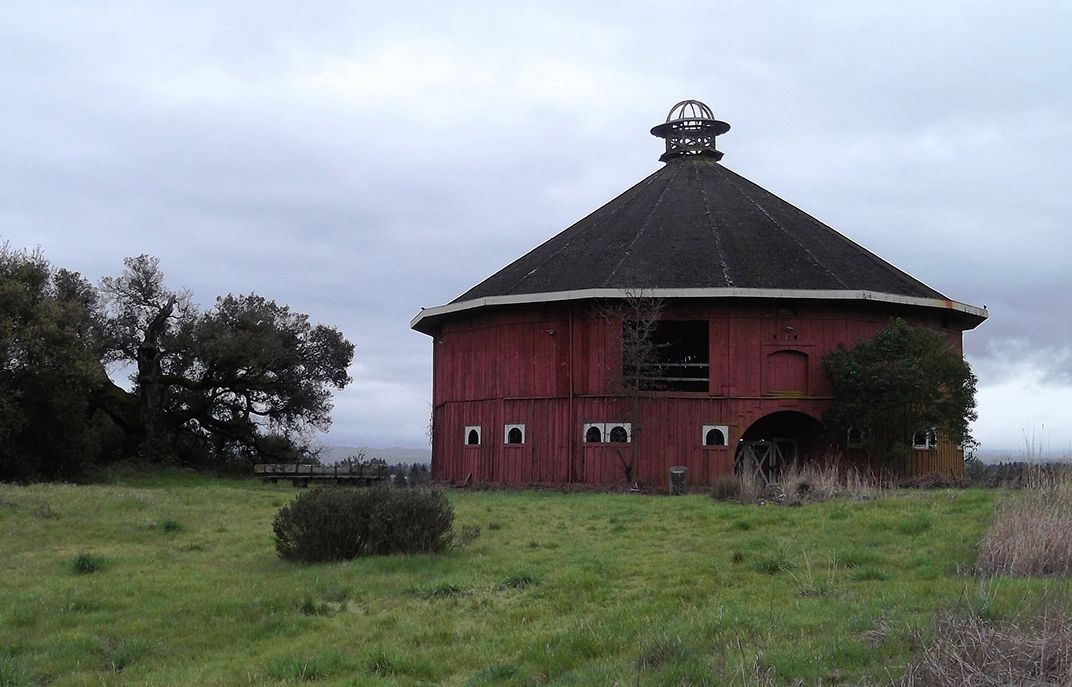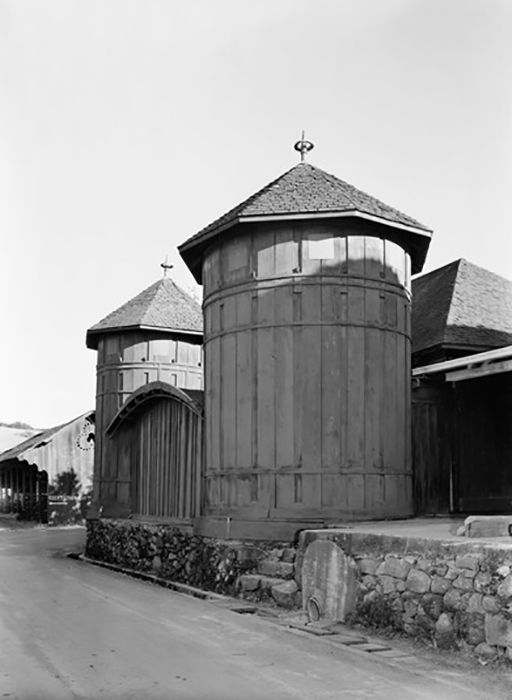As Wildfires Rage Across California Wine Country, a Historical Structure Turns to Ash
The iconic Round Barn was destroyed at Fountaingrove, once home to a Utopian community and one of America’s first Japanese immigrants
:focal(530x454:531x455)/https://tf-cmsv2-smithsonianmag-media.s3.amazonaws.com/filer/d0/77/d077d5a6-6b64-4117-ac1e-bf59ff16a91c/ap_17283020626164.jpg)
Hundreds of homes burned to the ground. Businesses destroyed, including a firearms shop where ammunition exploded in the blaze, and numerous wineries across the region. At least 15 dead, and the death toll expected to rise. Though the residents of California are more than familiar with wildfires, the 17 separate blazes that began on Sunday night north of San Francisco seem to belong to a category all their own.
“We had 20,000 acres [burned] in 12 hours. It’s pretty much unheard of,” said Cal Fire Captain Richard Cordova, according to the Mercury News.
Or, as Santa Rosa resident Ron Dodds said, “It looks like Armageddon.”
Among the many casualties of the fires (which have now spread across 180 square miles and are still burning) are, inevitably, historical sites. While the destruction of heritage may not be as devastating as the loss of a family home, the absence of familiar landmarks holds its own visceral punch. One such iconic landmark for Santa Rosa was the Fountaingrove Round Barn, built in 1899 as part of a Utopian colony managed by Kanaye Nagasawa, one of the first Japanese immigrants ever to enter the United States.
“The Round Barn had transcended even the history of the site and become very iconic for the city of Santa Rosa,” said Eric Stanley, associate director and curator of history at the Museums of Sonoma County. “To lose touch with that history and that place…” Stanley trailed off. He acknowledged that the human tragedy of the fires obviously come first, but losing historic sites is still painful (Museums of Sonoma County and their collections are all safe).

The story of Fountaingrove began in 1875, with the arrival of five men from New York State. Led by Thomas Lake Harris, the group had come to purchase land upon which to form a new colony for their socialist-spiritualist Utopian commune, the Brotherhood of New Life. Among those who came West with Harris was Kanaye Nagasawa, a 22-year-old Japanese student sent on a clandestine mission by the Satsuma clan (famous for their rebellion against the Japanese Imperial Army) to learn about Western culture to help prepare Japan for the 20th century.
“It’s just a history that is hardly discernible from fiction,” Stanley says.
As Harris continued preaching to his followers (the faith included a belief in immortality and the ability to reach transcendence through structured breathing exercises), he also oversaw the development of the Fountaingrove property. The settlement grew from a dairy farm with houses for members of the commune to a 1,700-acre vineyard. In the late 1800s, it produced more than 200,000 gallons of Fountain Grove wine annually, the label even winning awards in New York City.
“Fountain Grove soon became important in California as well, continuing as one of the state’s prestige vineyards into the 20th century, through Prohibition and beyond,” writes journalist and local historian Gaye LeBaron.
Fountaingrove was a microcosm for the rest of Sonoma. According to Stanley, it sat at the center of multiple movements: Utopian colonies, which flourished in Sonoma, and the vintners’ battle with phylloxera—a root parasite that kills grapevines. But perhaps no part of the Fountaingrove legacy has been as enduring as Nagasawa himself, who inherited the property when its founder, Harris, departed. Nagasawa became known as the “Baron of Fountaingrove” and hosted everyone from Japanese dignitaries to Thomas Edison. The Japanese businessman also ordered the construction of the Round Barn, a 16-sided building with 28 stalls that held the vineyard horses.
“Nagasawa was a unique figure,” Stanley says. “He became a highly respected winemaker and he was on the judging committee for the Panama-Pacific Exposition in 1915—and it was very unusual to have a Japanese person connected to that,” as few Japanese immigrants were in such powerful positions.

But after Nagasawa died in 1934, a series of political events turned the tide against his remaining family members. His niece and nephew, meant to inherit Fountaingrove, lost ownership of the property under a law that remained in place until 1952 and prevented Japanese nationals from owning land in California. In the coming years, his family members, along with more than 100,000 other Japanese civilians, were imprisoned in internment camps during World War II.
As for the Fountaingrove property, the buildings fell into disrepair and were gradually demolished as new owners came and went. The Round Barn was the last solid remnant of the Utopian experiment and winery business, and the Santa Rosa community had been discussing how to preserve it, according to Stanley.
“We’ve lost a lot of things over the years,” Stanley says. He was already thinking about organizing an exhibition on the lost history of the city for Santa Rosa’s 150th anniversary in 2018. “The courthouse at the center of town is gone, we used to have a Chinatowan that’s completely a thing of the past, the old brewery that was over here—all these things have been lost. That happens in any place, naturally, over time.”
What’s harder to grapple with are the natural disasters that take everything, suddenly, erasing the past and the present all at once.
/https://tf-cmsv2-smithsonianmag-media.s3.amazonaws.com/accounts/headshot/lorraine.png)
/https://tf-cmsv2-smithsonianmag-media.s3.amazonaws.com/accounts/headshot/lorraine.png)